A nation's military is divided between naval forces, aerial forces, and ground forces. For the ground forces, the player may train, customize, and command divisions consisting of various types of infantry, tanks, and other units. These divisions require equipment and manpower to fight properly. The navy and air force also require men and equipment, including the actual warships and warplanes that are used in combat.
Equipment is produced by military factories, while ships are built by dockyards. These military factories and dockyards are, in turn, constructed by civilian factories, which also construct a variety of other buildings, produce consumer goods for the civilian population, and oversee commerce with other nations. Most nations are initially forced to devote a significant number of their civilian factories to producing consumer goods, but as the nation becomes increasingly mobilized, more factories will be freed up for other purposes. Mobilization is represented as a "policy" that the player may adjust with the proper amount of political power, an abstract "resource" that is also used to appoint new ministers and change other facets of the nation's government. In addition to mobilization, there are other policies, including the nation's stance on conscription and commerce. It is telling that one of the most popular mods in the Steam Workshop since release gives the player total freedom to design their own divisions from scratch.
It will be interesting to come back to HoI4 after a year or so of patches to see if improvements have been made, particularly since the unpredictable AI is currently also a real problem. One play-through saw Germany declaring war on Yugoslavia on the historically accurate date even though events had already diverged so far from reality that Berlin was surrounded by a mixture of French and Soviet troops by early 1941. In another the Soviet Union declared war on Finland at the end of November 1939, as it did in real life, only to then neglect to station any troops in Leningrad, allowing Gustaf Mannerheim's men to march in completely unopposed.
While Hearts of Iron IV does feature some scripted events, the game features a "national focus" system that makes fixed events less necessary than in previous installments in the series. Each country in the game has a "focus tree" with various "national focuses" that grant certain effects or trigger events. For example, for the Anschluss to occur, Germany must first complete the focus that is related to it. Other focuses can grant special bonuses, like faster research times for certain technologies or extra factories. While some bonuses are very tangible, others are more abstract. These abstract bonuses are represented by "national spirits" that can be temporary or permanent.
Not all national spirits are granted by focuses, and not all spirits are entirely beneficial in nature. Focuses are completed over time; only one focus may be worked on at once, and working on one consumes some political power. Initially, only a handful of key nations, like Nazi Germany, the United Kingdom, the Soviet Union, and the United States, had unique focus trees; all other nations shared a generic one.
Subsequent updates and DLCs have added focus trees to other nations as well. Land in Hearts of Iron IV is divided into tiny regions known as provinces , which are grouped together to form states. Each state has a certain amount of building slots, factory slots, and 10 infrastructure slots. The major seas and oceans and the sky are similarly divided into different regions. These provinces each have a type of terrain assigned to them that determines how well different types of units will perform in combat there.
Divisions are placed in provinces and can attack enemy units in adjacent provinces. How well divisions perform in combat depends on various factors, such as the quality of their equipment, the weather, the type of terrain, the skill and traits of the general commanding the divisions, and the morale of both sides. Technologies can be researched to improve equipment and learn new military doctrines, among other things, which often means that a more technologically advanced nation will have an edge in combat. If a division successfully overwhelms an enemy province, they may occupy it.
Some provinces may have victory points, which can push a nation closer towards capitulation if occupied. Occupying key provinces within a state allows the occupying power to access the enemy's factories and natural resources in that state. Resistance to occupation within a state can hamper the occupying power's control over it. Late in the game, nations may develop nuclear bombs if they have the proper technology, which can be used to devastate enemy provinces and states. The factory system is good and makes sense both historically and for gameplay.
You can build civilian factories, which produce more factories or can be basically rented out for resources from other countries, and military factories, which produce military equipment. You need to build as many civilian factories as possible because you will need them for both economic development and military production since you're usually short certain resources. As your technology develops you'll want to produce better tanks and guns, however, you lose productive efficiency and it takes time to get your output back up to its previous level. Hearts of Iron IV is a grand action-adventure strategic video game that revolves around the time of the first world war. As the game progresses, the player has to form alliances, negotiate, build weapons, research, create factions among other nations and apply a lot of the brain to stay in the game. Every nation has naval forces, military forces, and air forces.
The player can train the army, customise and assign posts to the army. Paradox development studio came up with a grand strategy war game titled Hearts of Iron IV in 2016. Hearts of Iron IV is the fourth installment to the Hearts of Iron IV series, the biggest one to date. Similar to its previous successors, this game too revolves around the world situation during world war 2.
It takes back to the time of the 1930s, allowing players to lead their nations in the war to either victory or defeat. You'll be in charge of managing your country's resources and troops, choosing to use brute force or skillful negotiations to steer the course of the war. You have the power to relive history or to change it forever in solo games or in massive multiplayer matches with up to 32 other players. HoI4 is a good tool for learning about the technology, strategy and historical figures of WW2, but not as much the human toll or the economics.
It's great that they used so many historical figures and corporations and you will be reading about them, especially early on, and it might make a good jumping off point for studying the war in detail. The game completely sanitizes WW2 besides a death toll record, which isn't necessarily the place to show the horrific-looking fields of corpses which this represents. The game makes no mention of the holocaust which is just fine, there's no place for it. The final solution cost Germany money, troops, political stability, etc. If it was a "national focus" in the game, you wouldn't want to take it.
There is, however, a place to talk about the German slave economy. Germany replaced as many of its workers with slaves as possible during WW2 to free up Germans for the front and expand its wartime economy. This should be in the game as slave economics was a large part of how fascism worked, particularly in the Third Reich. There is also no money in the game, which is a big part of how the allied economy worked in WW2. In fact, it seems that the economic system presented in the game is most appropriate for the Soviet Union where the government could choose where factories would be built and what they would produce.
The way the economics of the war are modeled work well for gameplay, I just would have wanted a bit more options and some difference in how the economies worked in the different countries at the time, which is another missed opportunity. The strategic, action-adventure packed video game Hearts of Iron IV allows players to control any nation of their choice, provided they win over it during the war. Experience the most conflicting wartime in human history through Hearts of Iron IV. The game is extremely realistic and life-like. Right from the center of the battlefield, you can command and guide your nation throughout the war to suggest victory or loss.
This has made no event a compulsory round to be cleared by players. Every country has a focus tree that has various natural focuses. These special focus either help players to trigger events or implement certain effects. Some focuses can grant bonuses to players such as more research time or implementation of advanced technology or extra factories etc. War is tricky business, and when your conflict stretches to the globe's far-flung corners, it gets that much tougher.
You command one of the world's many countries , and your goal in this grand strategy game is to survive the coming storm . Different players will have different preferences--you can be as dove or hawkish as you like--and Hearts of Iron will support you. It's easy to muck with the flow of history, and in doing so unearth brain-bending strategic challenges that allow you to tell your own story of an alternate version of World War II. The opposing and allied AIs work together well except for a lack of transparency. Most of the time everything they do seems logical, but I would often observe strange behavior from the AIs, like massing around non-aligned countries without ever doing anything.
If we had more of a window into what the AIs were thinking perhaps this behavior would be less confusing. Perhaps there's some sort of strategic calculus to this, but again, we need more transparency, otherwise the AI looks insane. I was playing as Italy, which is not the faction leader so maybe the experience is different when you play as Germany, but I couldn't figure out how territory changed hands. It seemed as though territory would switch between allies at whim and often made no sense to me whatsoever.
Eventually, who occupied what would start to make sense, but it can be weird for a while. It would also be very useful to get updates as to what your allies are planning and what your enemies are thinking or at least saying publicly, maybe like speeches and stuff? This might be hard to do given just how many paths these wars can follow, but it would have been highly rewarding, interesting, and useful for the player. It has the Ehrhart and Hindenburg stuff, then it basically stops . Come on, I took the Panama Canal, give me a congratulatory pop up or something!
I later got one or two good pop up events, but that was it. While there's a definite historic aspect to the game, players' choices can also lead to "what if?" scenarios significantly different from how history actually played out. Although the game doesn't feature any graphic portrayals of violence, it does recreate one of the most violent events in human history. Some of the characters in the game are shown, in portraits, to be smoking pipes and cigars, similar to how the same figures were portrayed in pictures from that time. Hearts of Iron IV is an extremely complex game, with a large number of statistics to follow and menus/submenus to navigate. It's a complicated experience players must learn about through trial and error.
Your ability to lead your nation is your supreme weapon, the strategy game Hearts of Iron IV lets you take command of any nation in World War II; the most engaging conflict in world history. From the heart of the battlefield to the command center, you will guide your nation to glory and wage war, negotiate or invade. The broadstrokes of any game's eventual direction will come through a variety of means, the more effective for the primary nations being the selected national focuses.
This is where you select the route you want to go down, either selecting the historically accurate path or making the alterations that help you reach your goals. Sadly, there are only eight countries with specific focuses linked to real historical events, all other countries sharing a same general set that is based on improving varied technological and political advancements. The game was released in 2016 as a part of the Hearts of Iron WWII strategy series. In it, players can control the nation of their choice during the events of the war, forming alliances and fighting battles in an alternate history of the player's choosing. World War 2 is an excellent setting for the Clausewitz engine to shine, but it's also been heavily modified for this game. The game moves hour by hour and you can actually watch the light move across the globe that indicates day and night, and even the moon reflects off the ocean in an excellent graphical touch.
Day and night affect combat and combat slows down at night. You can mitigate this for your side with a series of upgrades and technologies which can make your forces much more effective night fighters. The game has many different historical and strategic phases throughout as the level of technology changes. This meant that the gameplay never got old, as there were always new challenges and situations to deal with.
Trade wars are excellent; cutting your opponents off from the essential resources of their empires and trading partners by controlling significant land and sea regions is complex, fun and makes sense historically. This mod features between years worth of content for all the major powers, including some minors. It also has thousands of new events, new units, new mechanics including DECON and MAD.
You can purchase equipment from the private sector, a new economic system. I've spent probably a day just watching youtube videos and reading up on all the strategies and hav been through 3 campaigns none of which I have won - haha! Mainly because as all Piaradox games it does take a while to find all the right options and strategies in the game.
I absolutely love the MACRO and MICRO management you can in the game - you can control each individual unit or you can make a battle-plan for 100 divisions and you can preview how the battle plan will be executed even before it's launched. Hearts of Iron IV also attempts to recreate the complex diplomatic relationships of the day. Nations may undertake a variety of diplomatic actions; they may sign non-aggression pacts, guarantee the independence of other nations, and offer or request military access, amongst other things.
Another key feature of diplomacy is the ability to create a faction or invite other nations to an existing one. Faction members may assist each other in wars, making faction members precious assets. Some more clandestine diplomatic actions are also available. For example, the player may justify war against other nations, spread their ideology abroad, or stage a coup. Countries in the game may be democratic, fascist, communist, or non-aligned. Each of the four ideologies has advantages and disadvantages; for example, fascist nations can go to war with other countries easily, but other nations are not as willing to trade with them as they are with democratic countries.
If a different ideology becomes too popular in a country, a referendum may be held that will peacefully convert the nation to the most popular ideology. Otherwise, ideologies may come to power violently through coups, civil wars, or forced subjugation by a foreign power. GenreGrand strategy wargameModeSingle-player, multiplayerHearts of Iron IV is a grand strategy computer wargame developed by Paradox Development Studio and published by Paradox Interactive.
It is the sequel to 2009's Hearts of Iron III and the fourth main installment in the Hearts of Iron series. Like previous games in the series, Hearts of Iron IV is a grand strategy wargame that focuses on World War II. The player may take control of any nation in the world in either 1936 or 1939 and lead them to victory or defeat against other countries. Experience the flexible technology system, where all major powers get their own unique identity. Develop detailed historic tanks and planes through research and army experience.
In my opinion, Hearts of Iron 4 is the best grand strategy game out there. The setting is added an excellent level of authenticity with the battle-plan feature, excellent Ai and a world map that is absolutely splendid to look at and watch the war unfold. Combined with a well developed political and infrastructure system, there is so much that can be done in the game, one that will absorb your time and leave you with lost time. It's the best one yet and it's already my front-runner for game of the year. HoI4 features the best technology tree, or should I say trees, I've ever seen.
At any given moment there are more than a dozen different technologies you can research and you can also research multiple technologies at once. This all makes the player feel very much in control and makes perfect sense. The idea that your entire population is going to be researching theology, then once that's done they will all research something else, like in Civilization, doesn't really make much sense from a historical perspective.



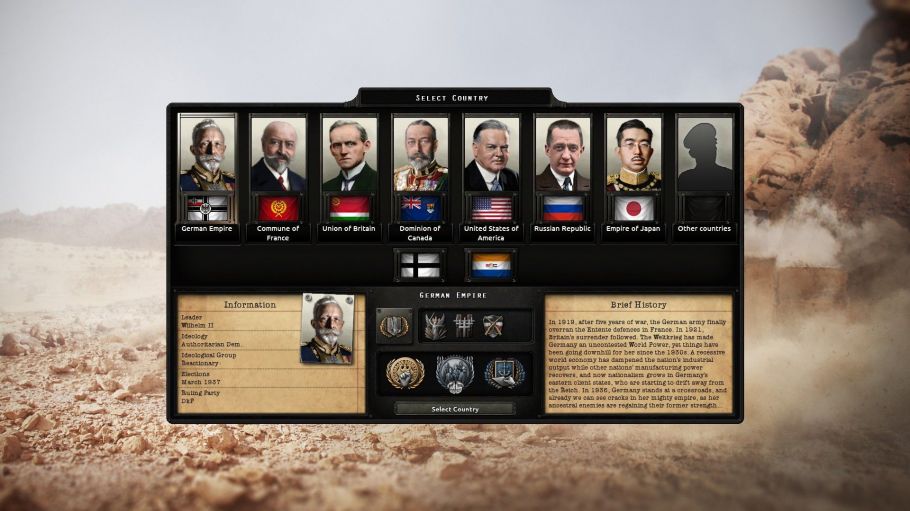
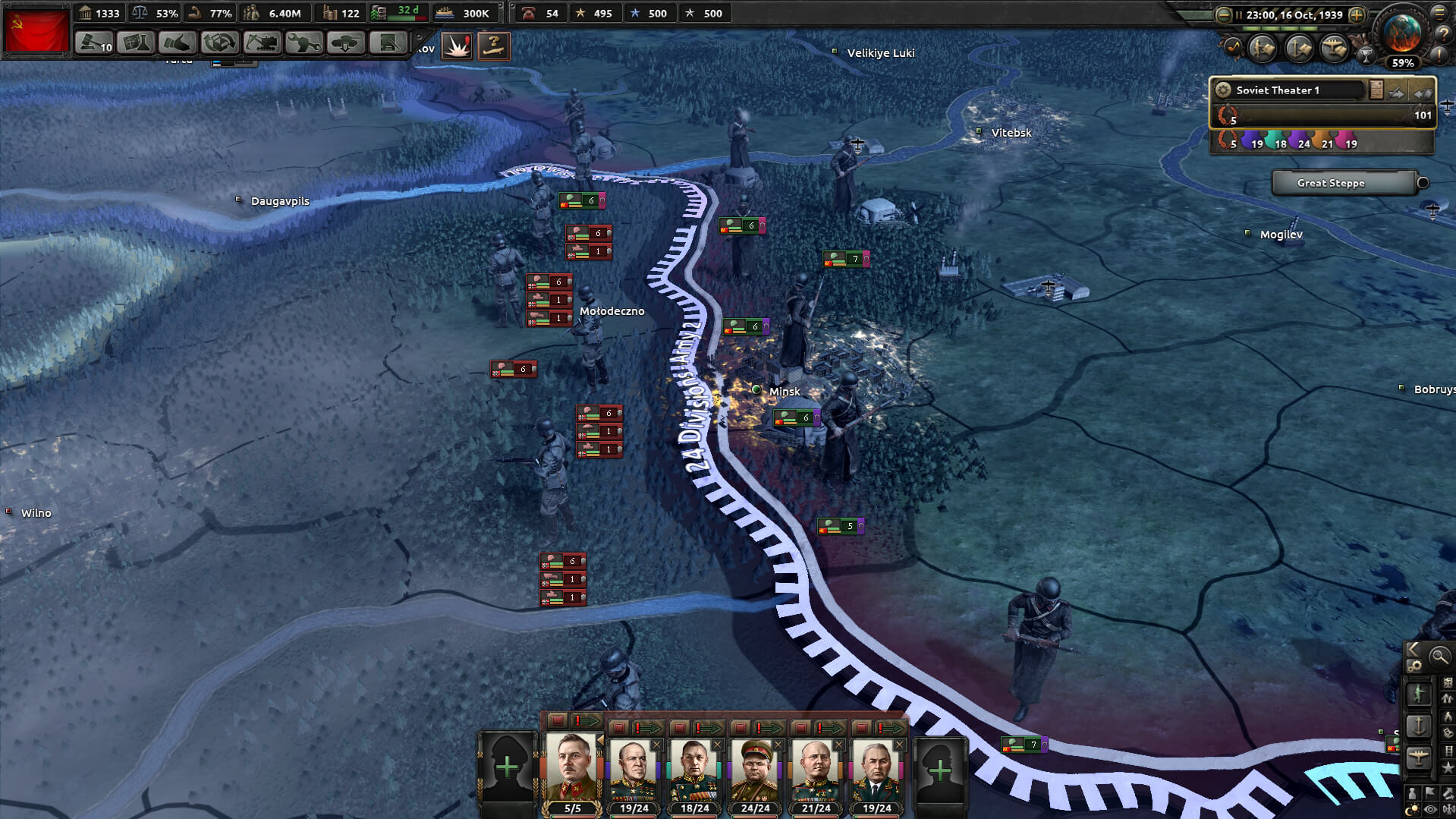





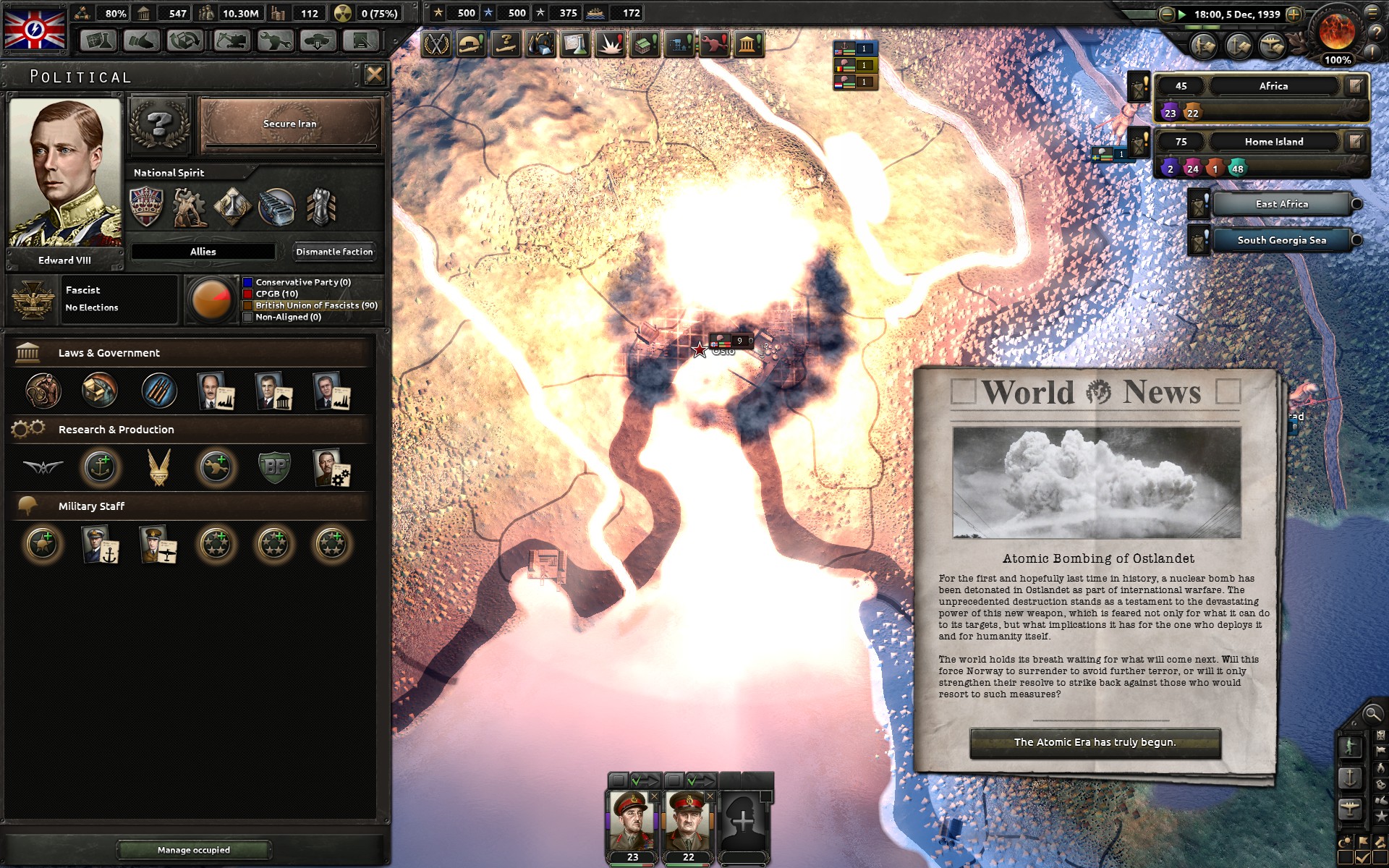
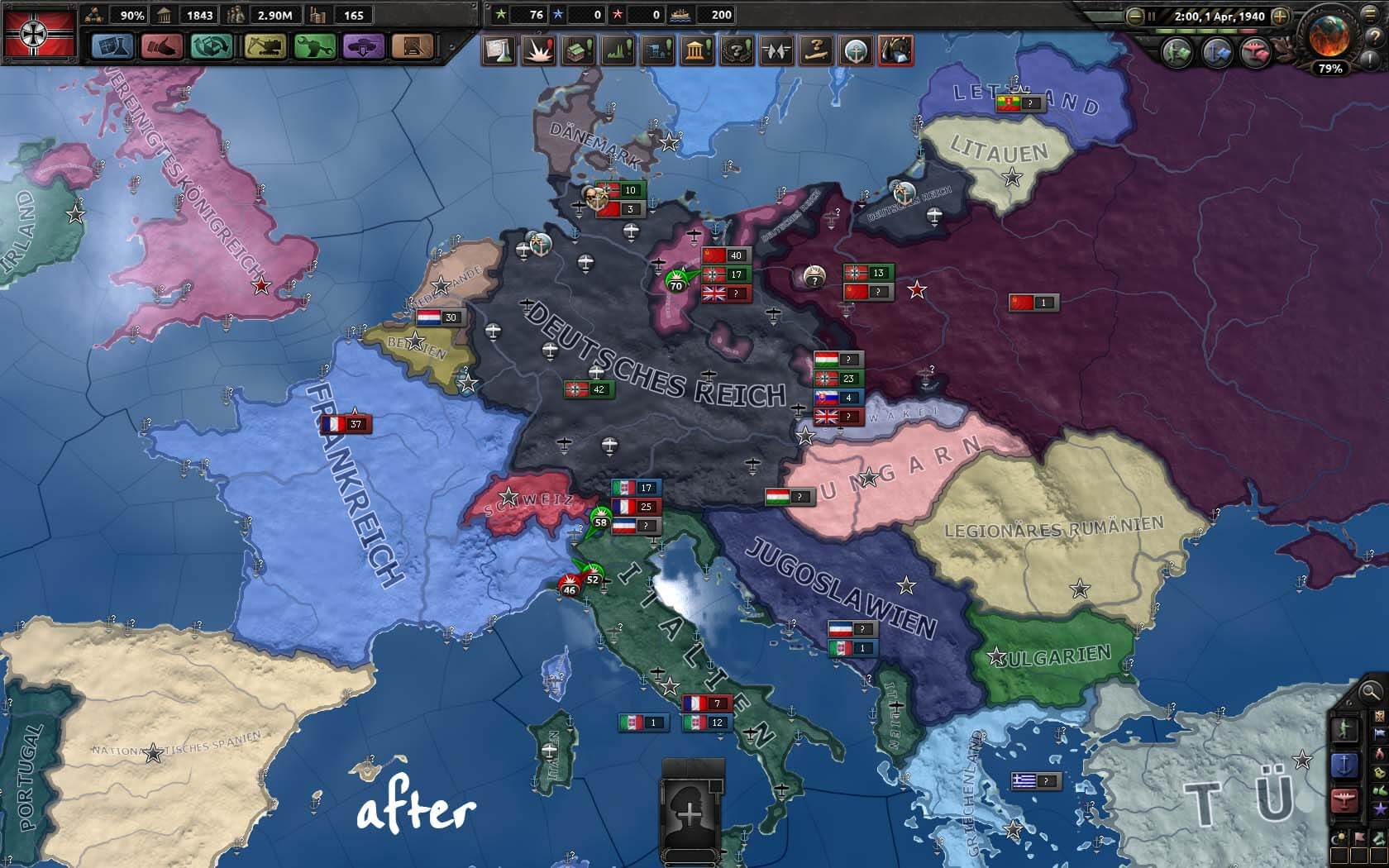





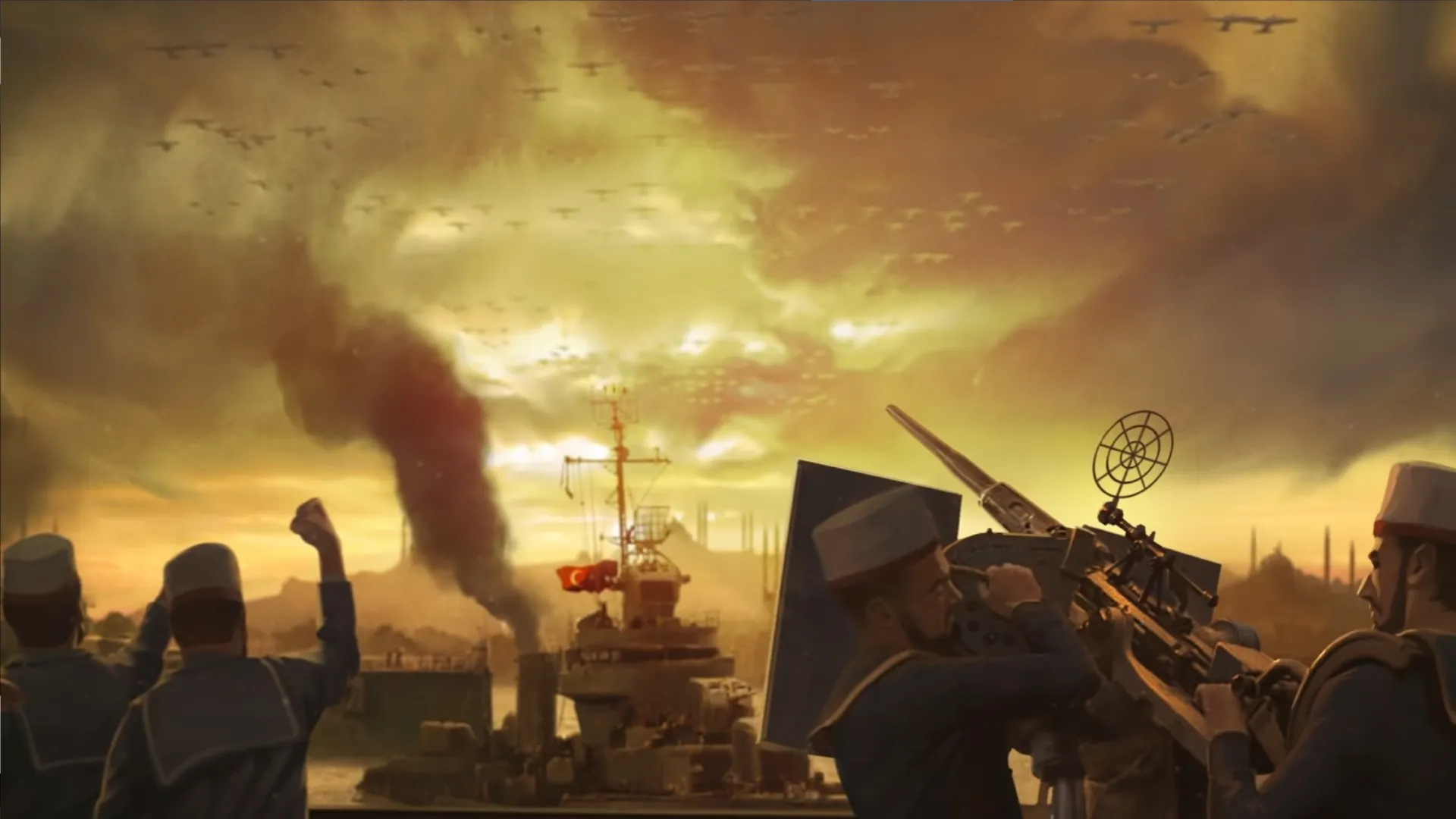



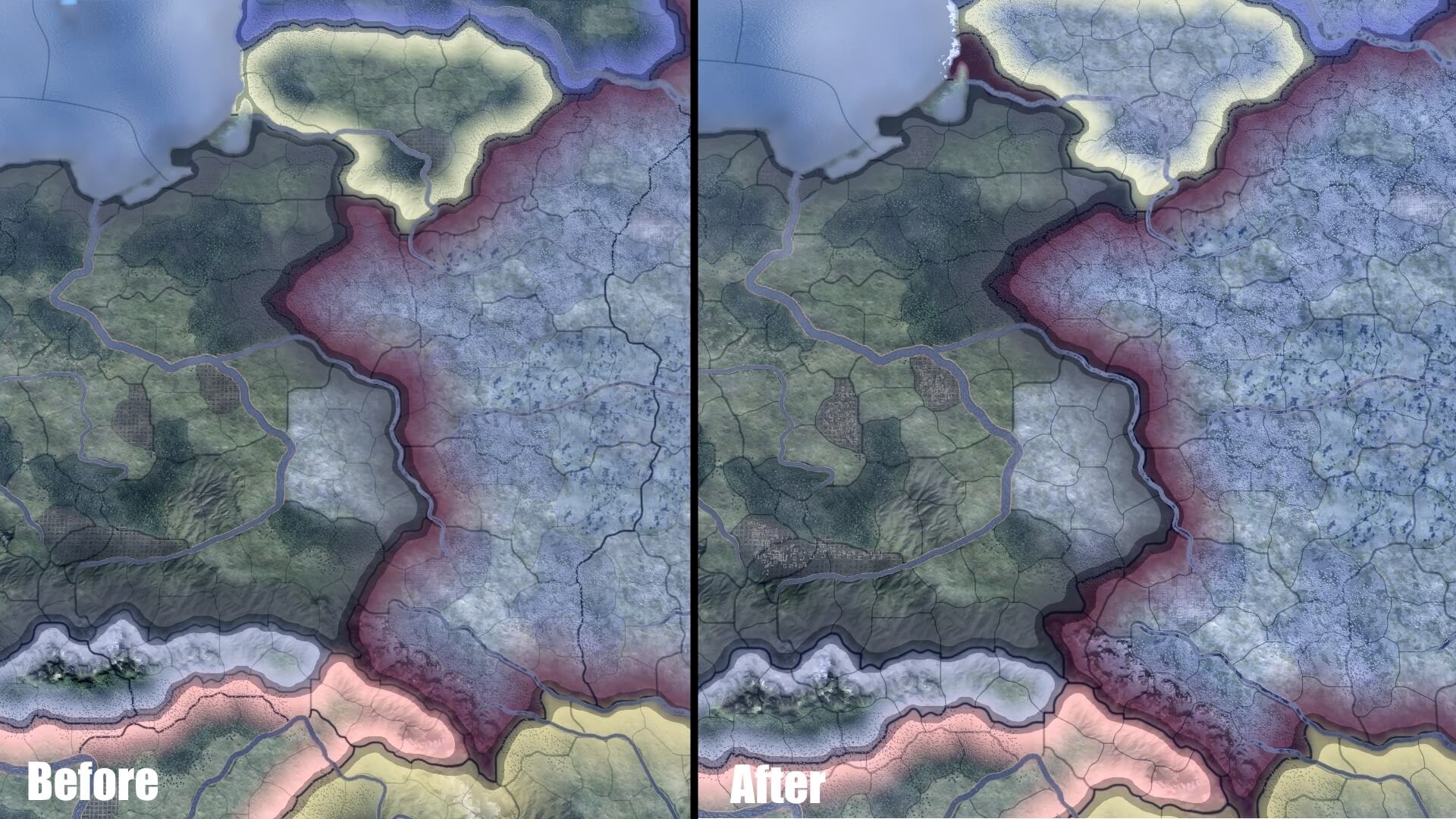



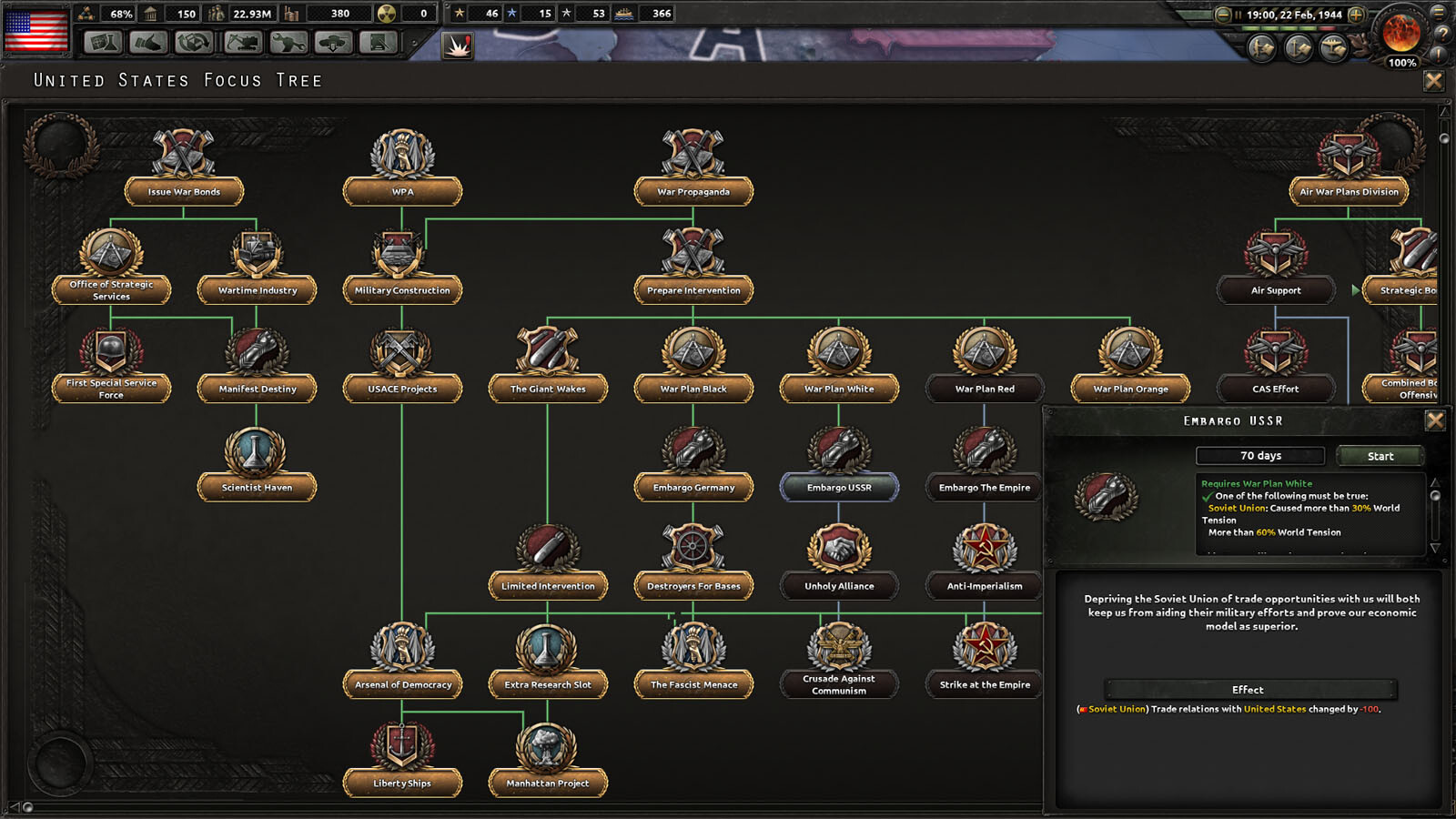
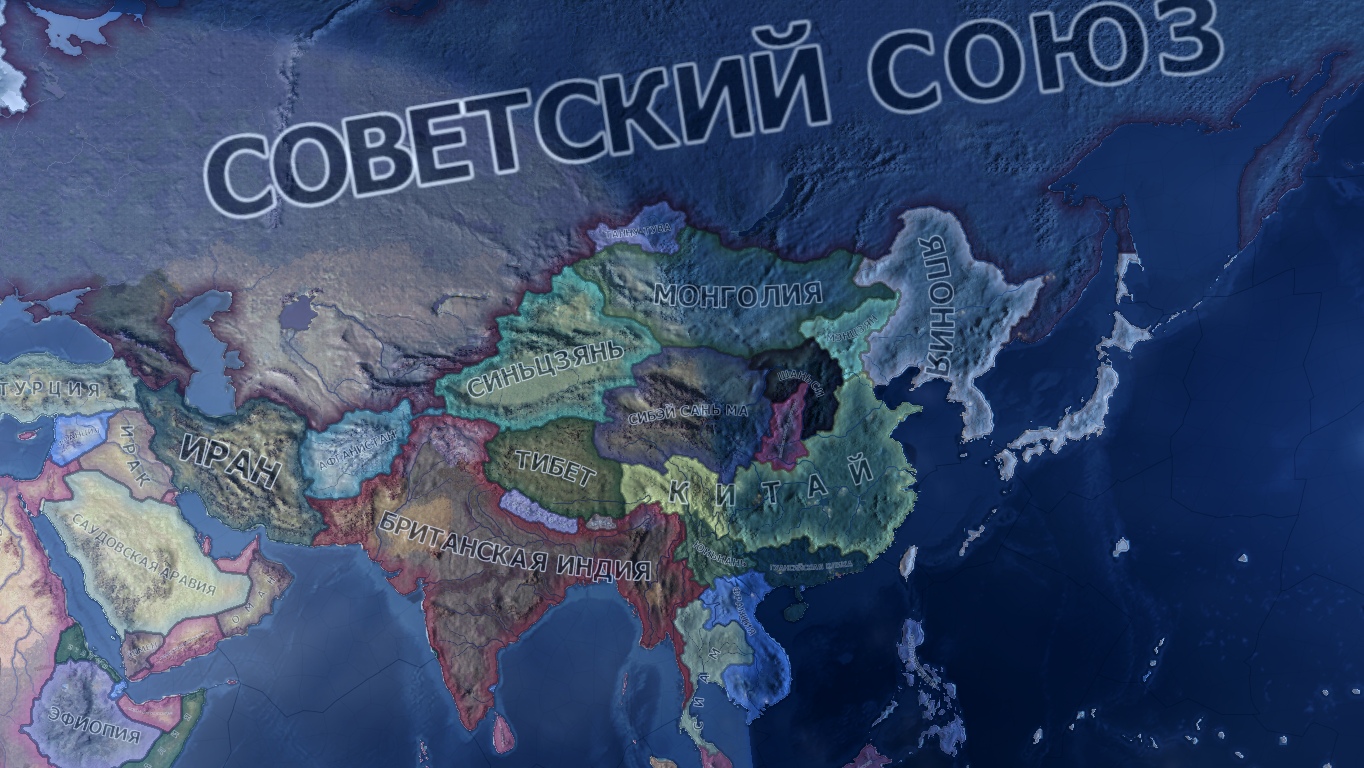
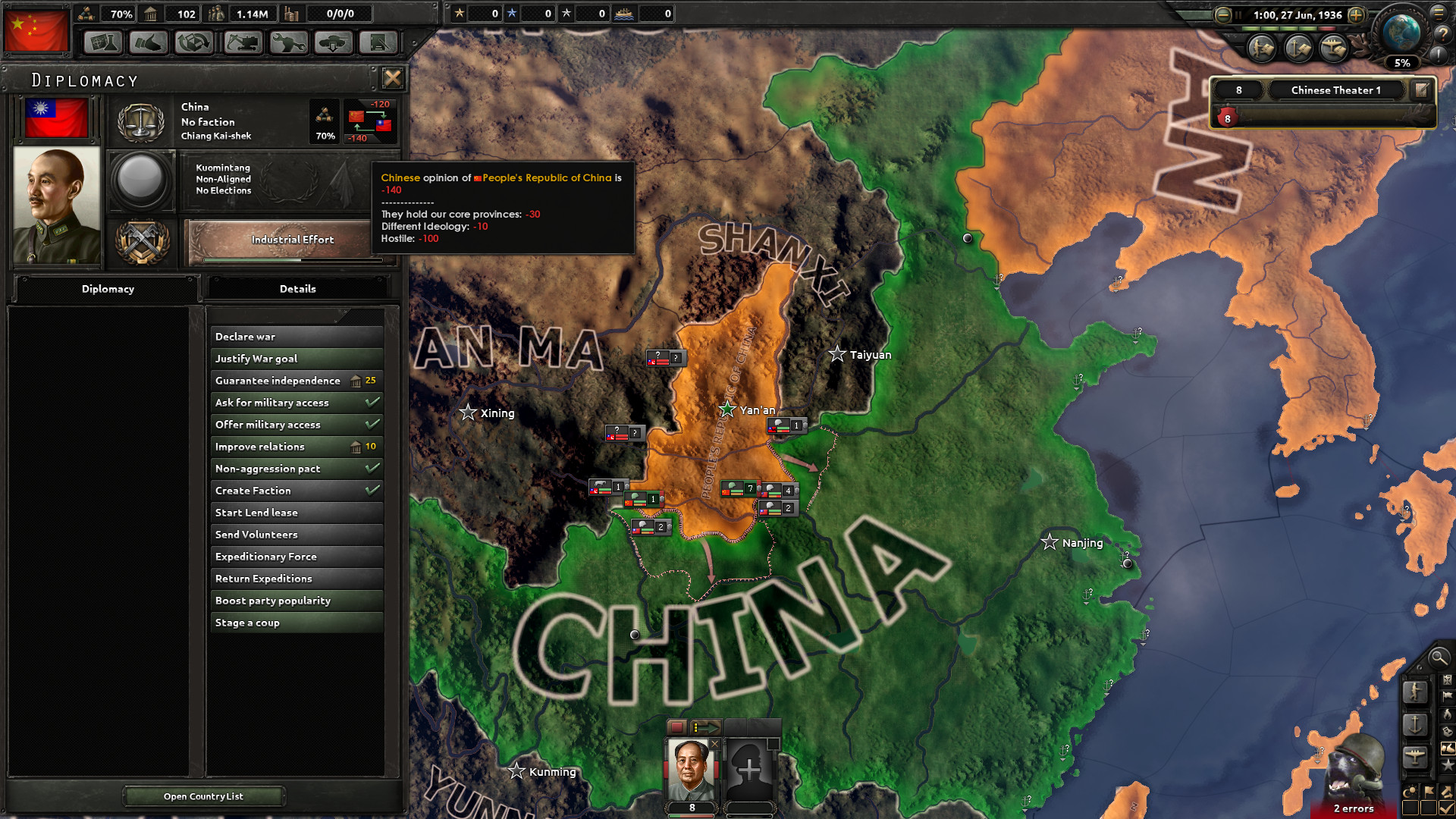

No comments:
Post a Comment
Note: Only a member of this blog may post a comment.